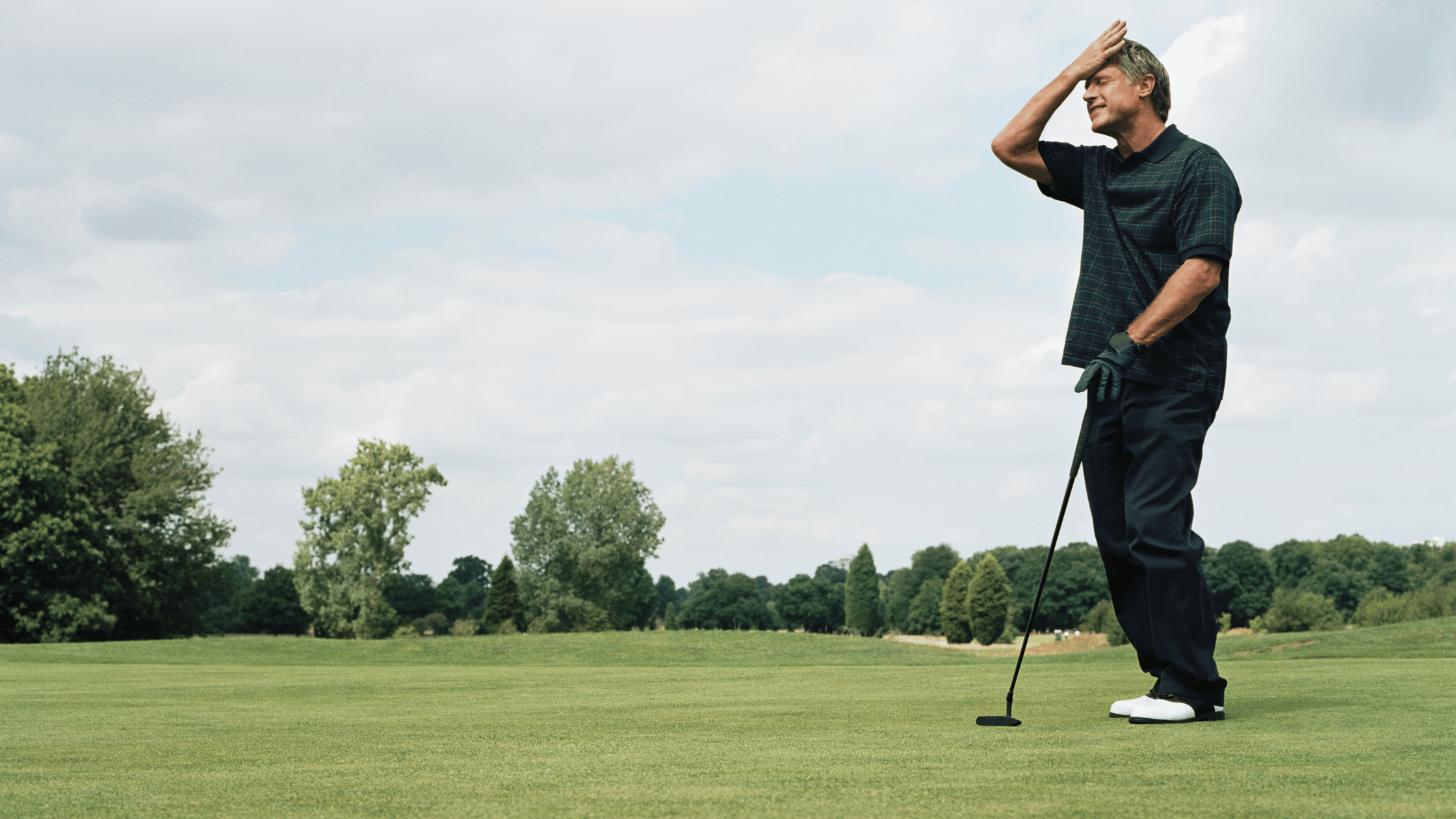Why Your Golf Score May Not Be Improving and How to Change That

Licensed Physical Therapist, PT, DPT // Certified Dry Needling Specialist // TPI Level 1 Certified // BaseU Hitting and Pitching Certified // EW Motion Therapy Homewood
Golf, a game of precision, patience, and skill, often mirrors life's own challenges. Many enthusiasts find themselves at a standstill, their scores stagnant, wondering why their efforts don't translate into better performance on the course. Sometimes, especially for golfers, the stagnation can originate from a mechanics issue - even the best players’ bodies sometimes can’t do what they want. Physical therapy can be a great supplementary treatment for mechanics issues - our golf specialists at EW Motion Therapy help golfers at any level improve mechanics and play pain-free. You may decide that our golf program isn’t right for you, but you can still review this guide as we delve into the multifaceted reasons behind this plateau, offering practical solutions, treatment options, and insights into how physical therapy can be a game-changer in elevating your golf game.
Understanding the plateau: beyond the surface
The psychological aspect
The mind plays a pivotal role in golf. Stress, anxiety, and a lack of confidence can significantly hamper your ability to perform under pressure. The mental game is as crucial as physical prowess. Addressing psychological barriers is the first step toward breaking through your score plateau. Techniques such as visualization, mindfulness, and goal-setting can enhance focus and boost confidence, enabling you to approach each shot with a clear mind.
Physical limitations
When it comes to golf, the devil is often in the details, particularly regarding the physical demands of the sport. A closer look at specific physical limitations can shed light on why your golf score may not be improving, despite diligent practice and dedication. Here, we delve into these constraints, offering insights into their impact on your game and practical advice for overcoming them.
Limited range of motion and flexibility
A full, fluid golf swing requires a significant range of motion, particularly in the shoulders, hips, and spine. Limited flexibility can restrict your backswing, leading to a loss of power and an inability to maintain proper swing mechanics. This limitation often results in compensatory movements that can throw off your accuracy and consistency.
Incorporating dynamic stretching routines into your daily regimen can significantly enhance your flexibility. Focus on exercises that target the major muscle groups used in golf, including the shoulders, chest, hips, and hamstrings. Yoga and Pilates are also excellent for improving flexibility and core strength, directly benefiting your golf swing.
Core weakness
The core muscles play a pivotal role in stabilizing the body during the golf swing. Weakness in this area can lead to inefficient power transfer from the lower body to the upper body and the club, resulting in reduced swing speed and distance. Additionally, a weak core may increase the risk of injury due to the inability to support the spine and maintain proper posture throughout the swing.
Strengthening the core is crucial for improving golf performance. Exercises such as planks, Russian twists, and stability ball workouts can build core strength and endurance. Incorporating these exercises into your fitness routine can lead to a more powerful and controlled golf swing.
Muscle imbalances
Golfers often develop muscle imbalances due to the repetitive nature of the golf swing, favoring one side of the body over the other. These imbalances can lead to asymmetrical strength and flexibility, affecting swing mechanics and increasing the risk of injury. Common issues include differences in shoulder and hip mobility and strength discrepancies between the leading and trailing sides of the body.
Addressing muscle imbalances requires a targeted approach to training, focusing on exercises that promote symmetry and balance. Resistance training that includes unilateral exercises (those that work one side of the body at a time) can help correct imbalances. It's also beneficial to engage in activities that challenge the body in different ways, such as swimming or playing other sports, to ensure a well-rounded physical condition.
Poor posture and alignment
Proper posture and alignment are foundational to an effective golf swing. Poor posture, such as slouching or excessive forward lean, can alter the swing path and lead to inconsistent ball striking. Similarly, improper alignment with the target can result in directional errors, making it difficult to hit the ball accurately.
Regular posture assessments can identify areas for improvement, and exercises designed to strengthen the back and shoulders can help in maintaining an upright posture. Practicing your setup in front of a mirror can also aid in developing a consistent and correct posture and alignment, reinforcing muscle memory for when you're on the course.
Addressing these physical limitations through a combination of targeted exercises, stretching, and professional guidance can pave the way for significant improvements in your golf score. It underscores the importance of a comprehensive approach, blending physical preparedness with skill and mental strategy, to excel in the game of golf.
Practical solutions: enhancing your game
Technique refinement
Improving your golf score begins with mastering the basics. Technique refinement, including grip, stance, and swing mechanics, is paramount. Engaging with a golf coach for personalized feedback can uncover specific areas for improvement, allowing for more focused practice sessions. Additionally, video analysis of your swing can provide visual insights into your technique, offering a different perspective on what needs adjustment.
Fitness and conditioning
A tailored fitness regimen can significantly enhance your golf performance. Strength training, focusing on core stability, and exercises that improve flexibility and balance, can increase your power and control. Incorporating golf-specific exercises into your routine can lead to noticeable improvements on the course.
How can physical therapy help improve performance?
Identifying and treating physical barriers
Physical therapists specialize in assessing and treating the physical barriers that may be hindering your golf performance. Through a comprehensive evaluation, a physical therapist can identify issues such as muscle imbalances, joint restrictions, or postural anomalies. Treatment plans often include targeted exercises, manual therapy, and modalities designed to address these issues, ultimately improving mobility, strength, and stability.
Customized rehabilitation programs
For golfers recovering from injuries, physical therapy offers customized rehabilitation programs that focus not only on recovery but also on prevention of future injuries. These programs are tailored to meet the specific needs of golfers, ensuring a safe and effective return to the game. Emphasis is placed on proper technique and the mechanics of the golf swing, reducing the risk of re-injury and enhancing overall performance.
Integrating physical therapy into your golf routine
Incorporating physical therapy into your golf routine can provide a strategic advantage. Regular sessions with a physical therapist can keep your body in optimal condition, addressing any new concerns before they become problematic. Additionally, therapists can offer guidance on warm-up and cool-down routines specifically designed for golfers, further reducing injury risk and improving performance.
Improving your golf score is a journey that requires a holistic approach, addressing mental, physical, and technical aspects. Understanding the underlying reasons for a plateau in your performance is the first step toward overcoming it. Practical solutions, such as technique refinement and fitness conditioning, play a crucial role in enhancing your game. However, integrating physical therapy into your routine offers a comprehensive approach to overcoming physical limitations, preventing injuries, and ultimately unlocking your full potential on the golf course.
Whether it's through refining your technique, enhancing your physical condition, or leveraging the expertise of physical therapists, the path to improving your golf score is within reach. Distance can often be a reason for stagnating scores - click the button below to download our ebook with tips on how to increase your distance.


